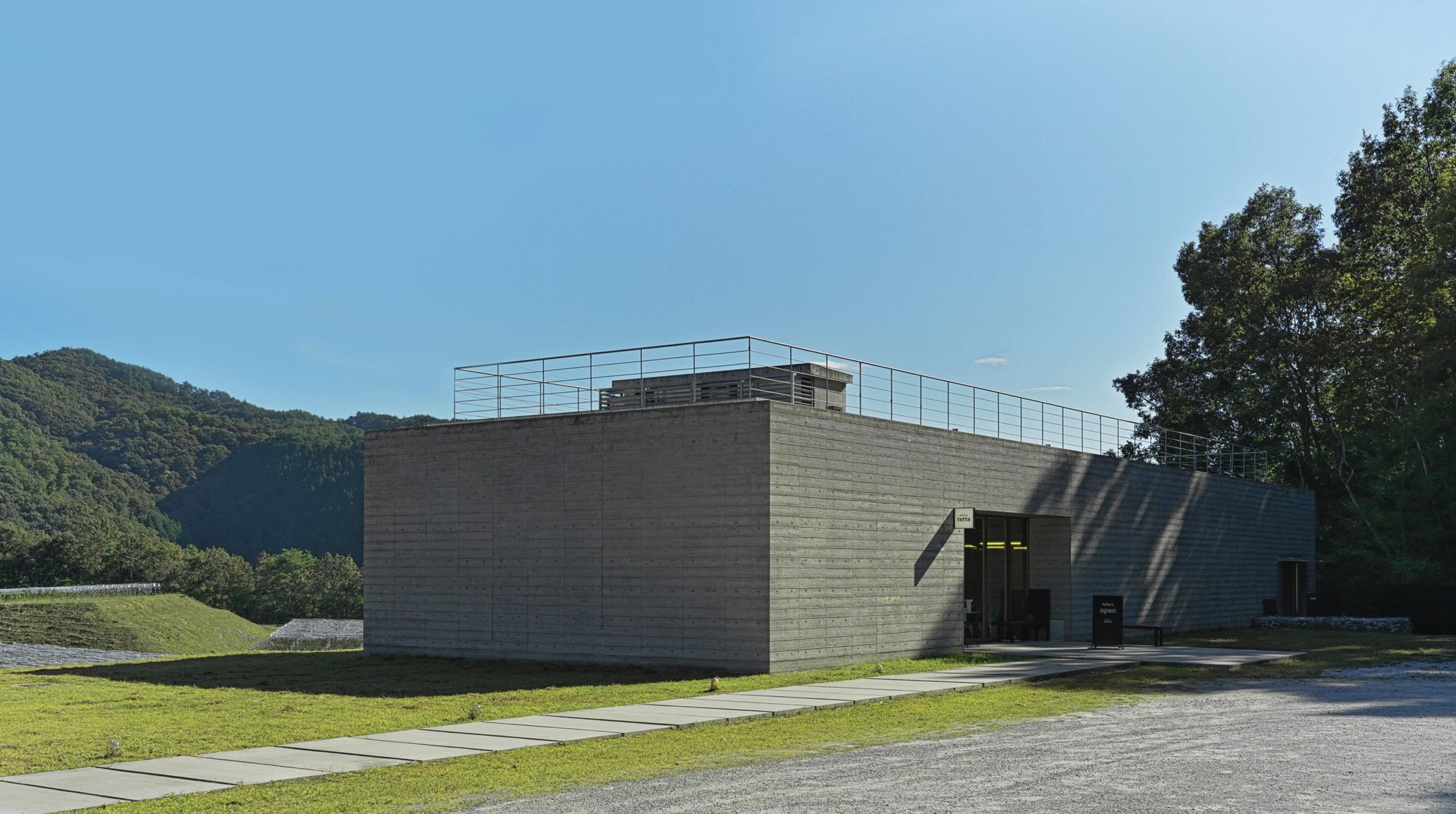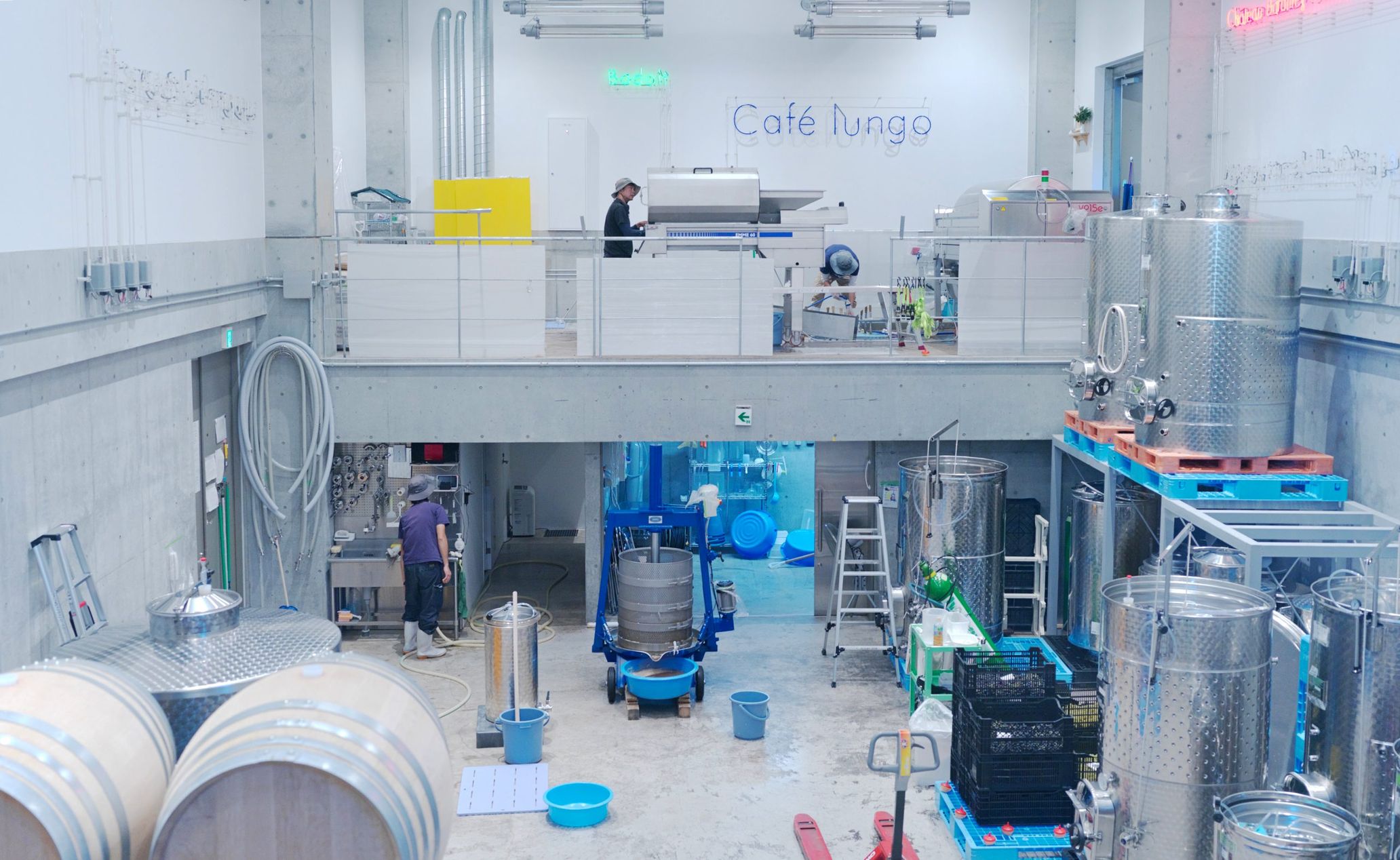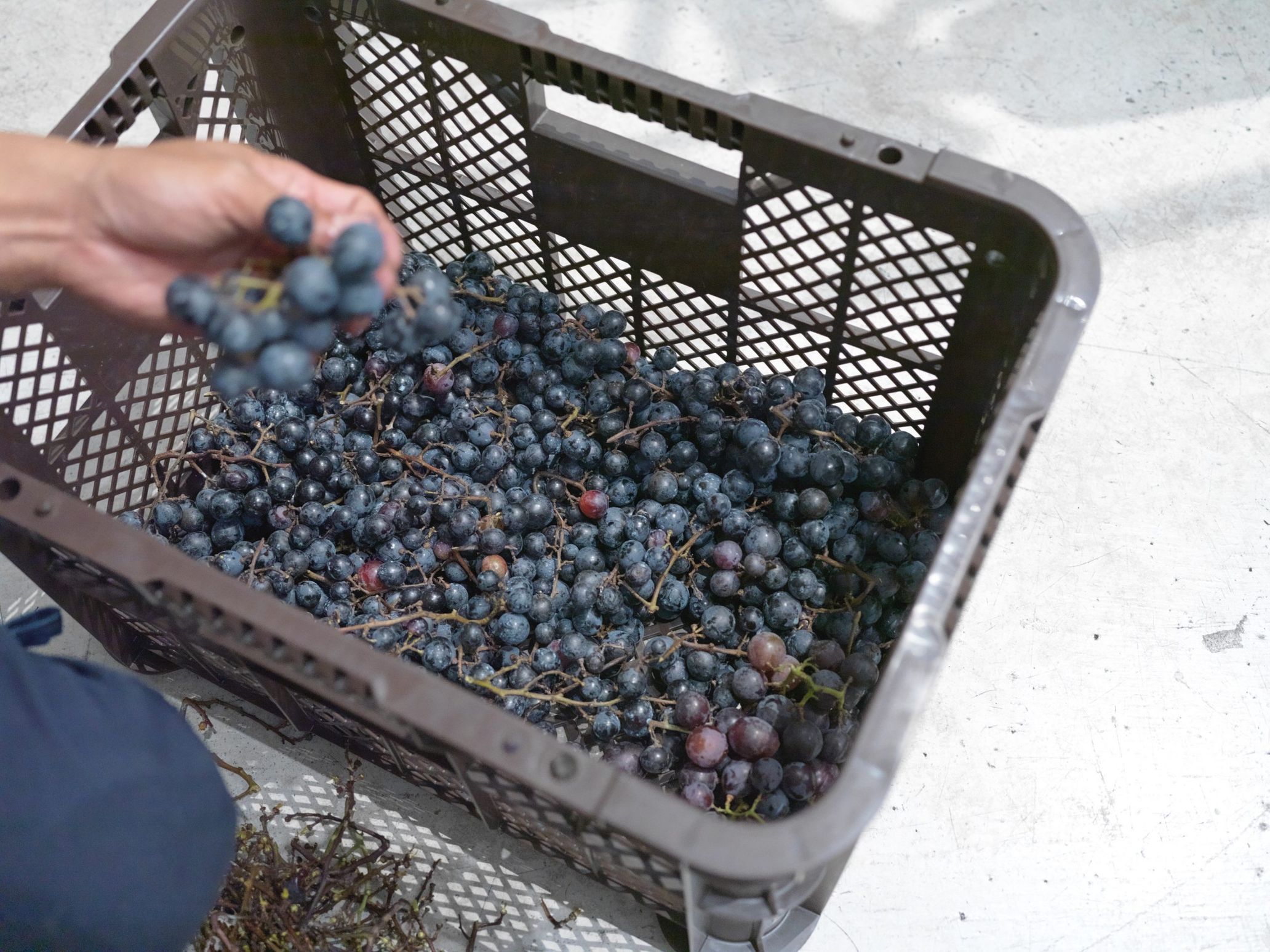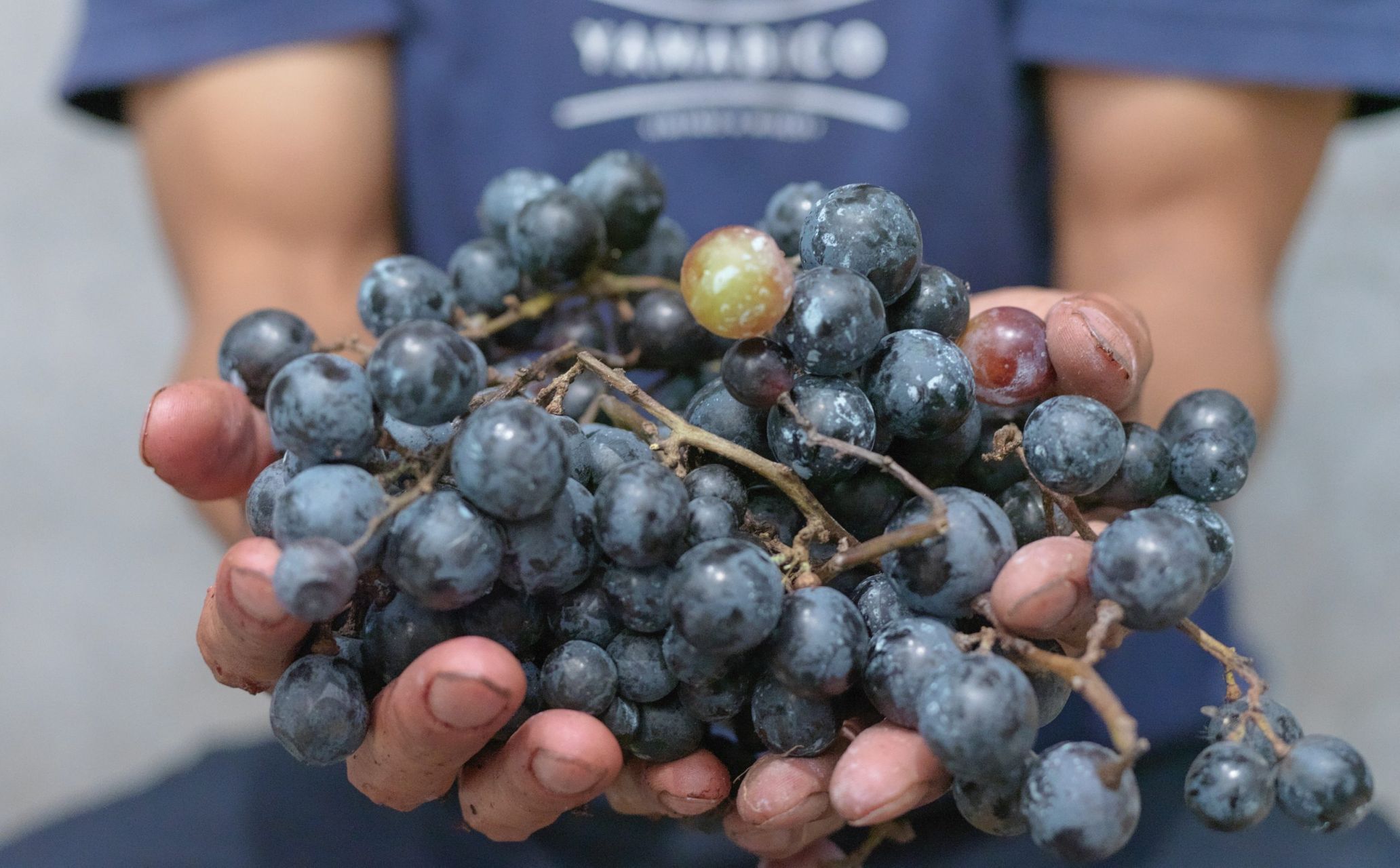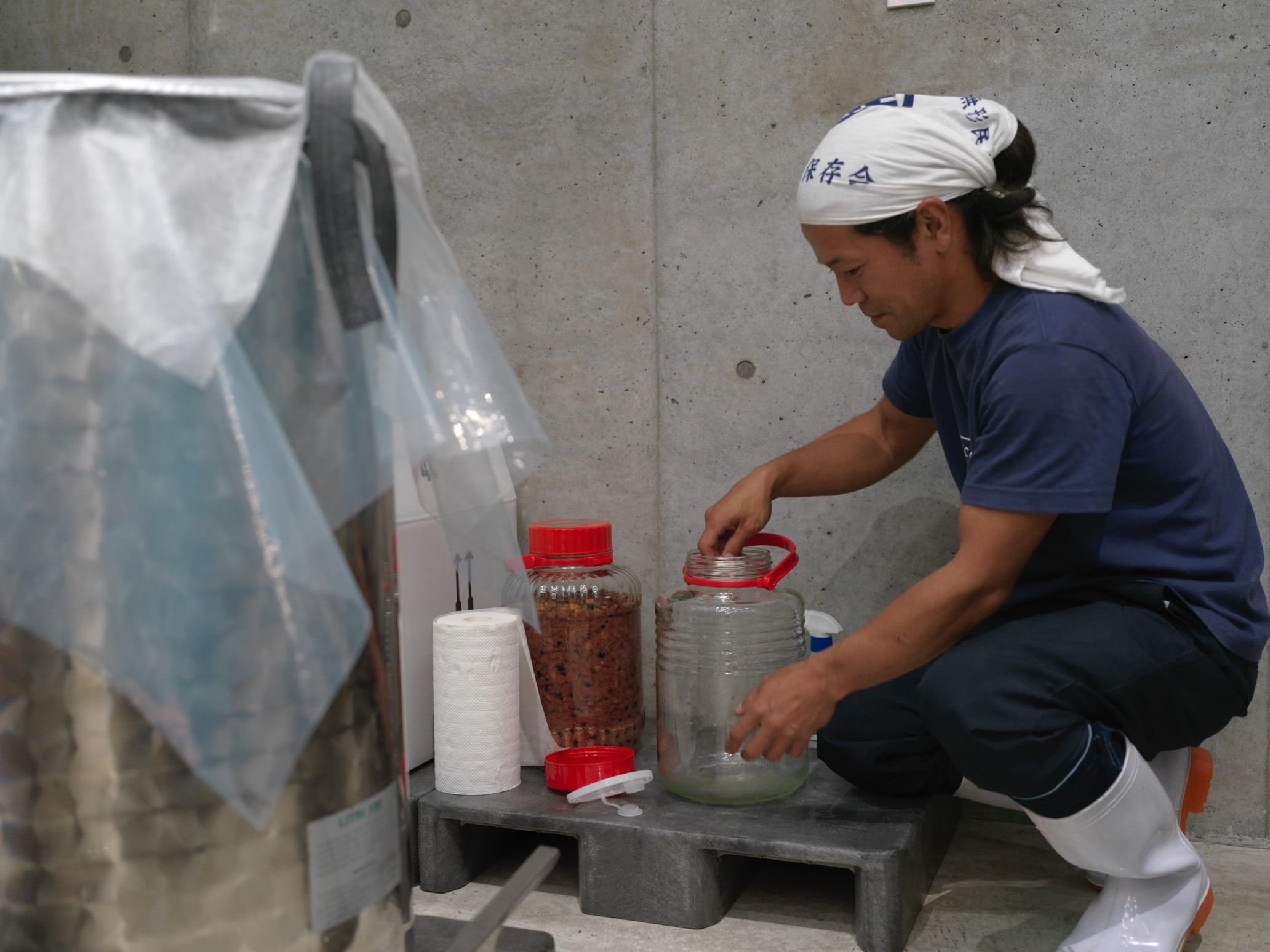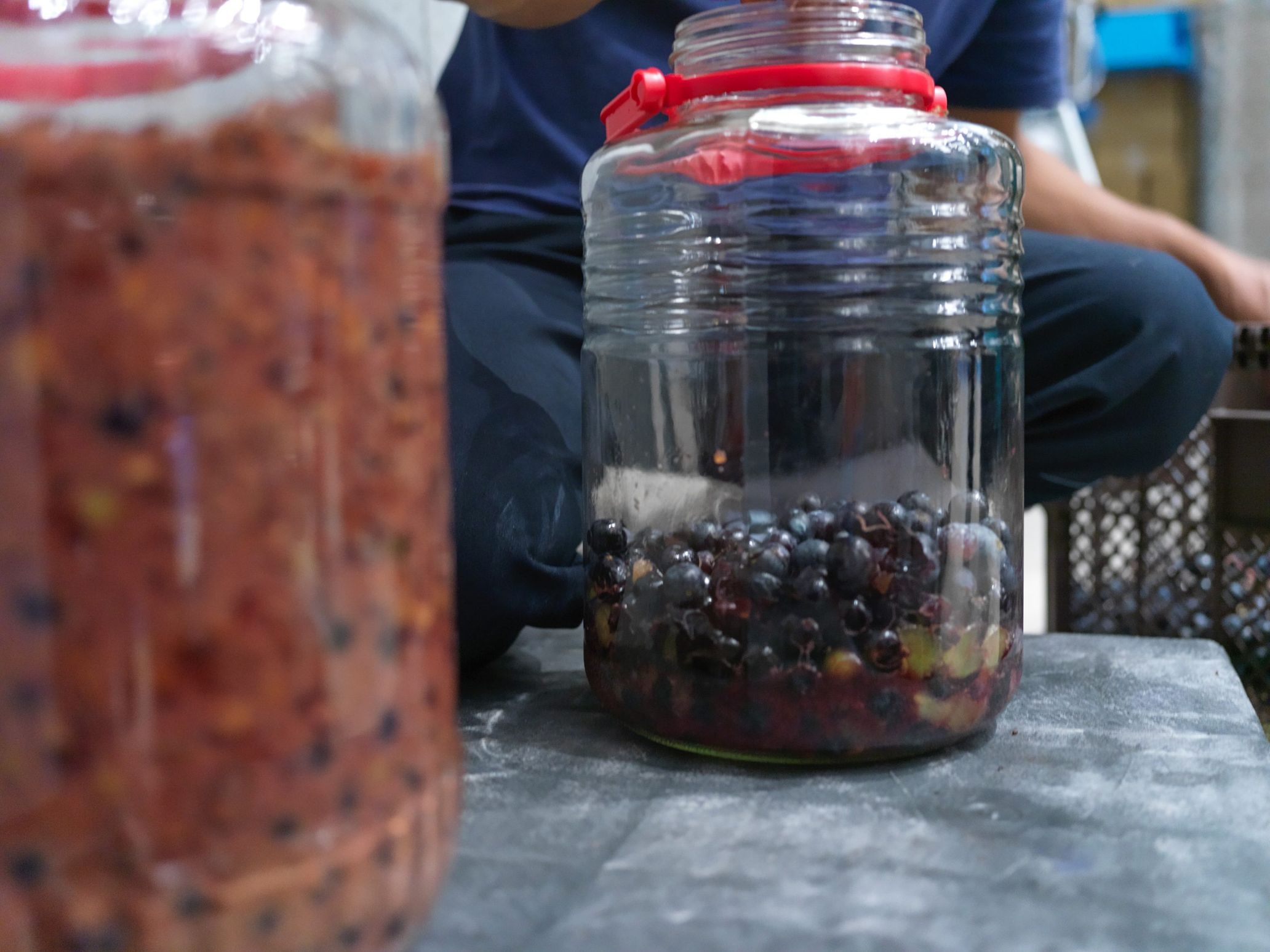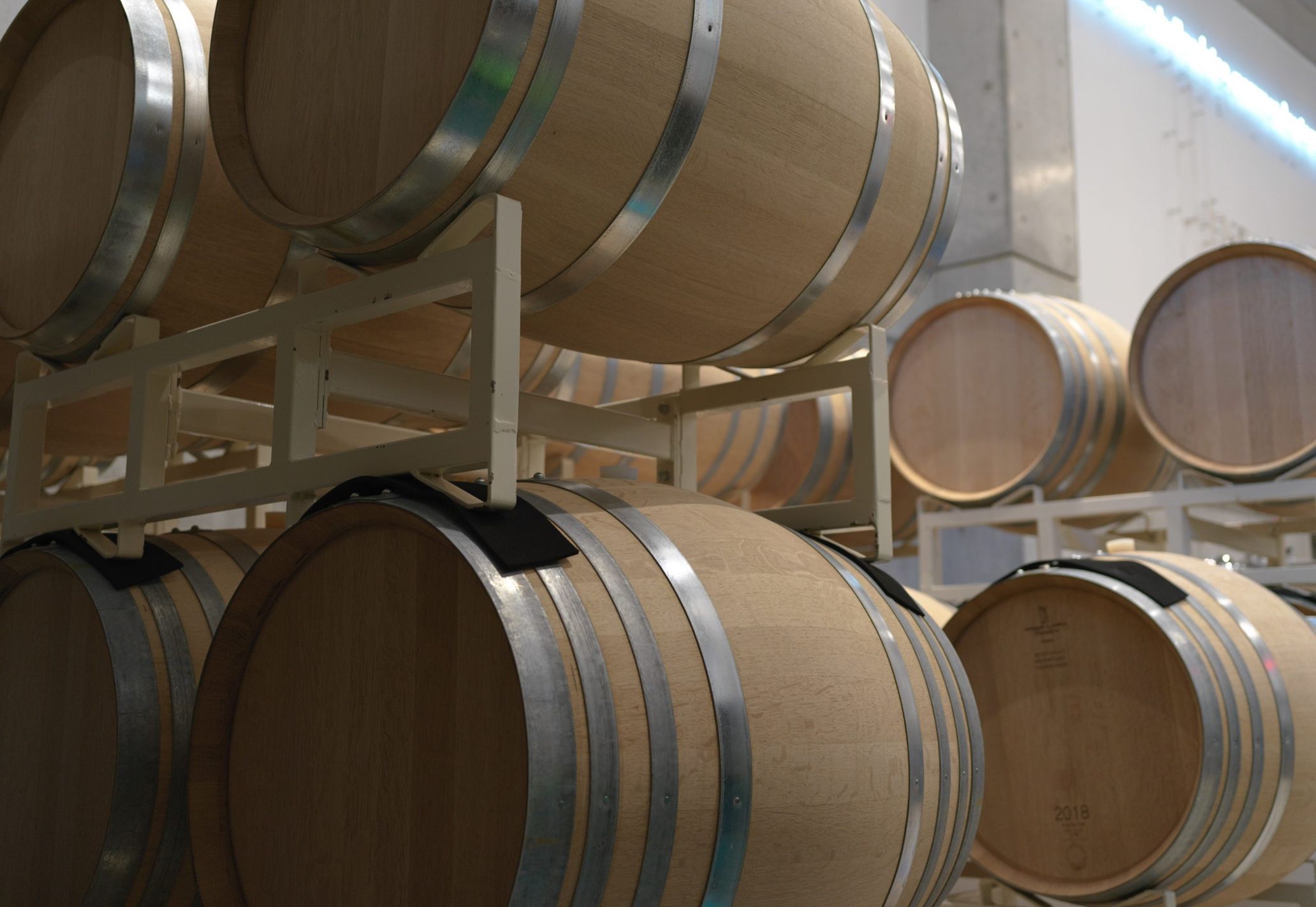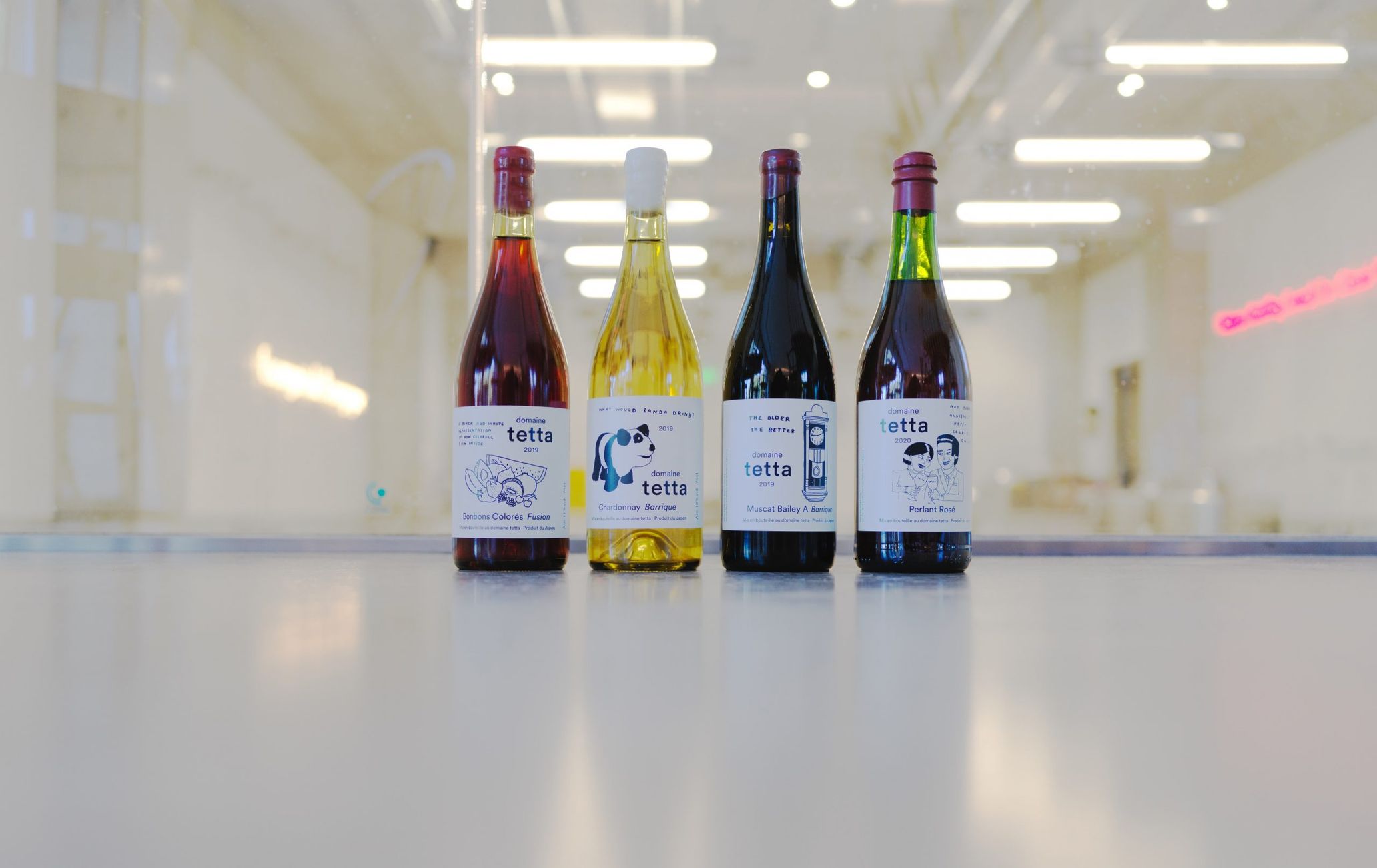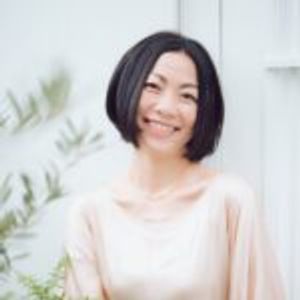Based on the concept of understanding Japanese “tashinami” (sophistication), this series rethinks the essence of Japanese culture through all kinds of people, communities, and phenomena. I spoke to Takehiro Miura, a Yamabushi who runs Yamabiko Winery in the Ohaga area of Misaki, Okayama, about vinification.
In 2017 Takehiro Miura, a Yamabushi of Mt. Haguro, moved to Misaki, Okayama, in hopes of reviving the satoyama via winemaking. A decade before that, another person in Okayama tried to bring the abandoned rice paddies back to life: Ryuta Takahashi, the president of domaine tetta. Takahashi founded domaine tetta in 2009 in Tetta, Niimi, the northwestern part of Okayama. Today, it has a vineyard, a winery, a cafe, and a wine store. Cars with license plate numbers from other prefectures can be seen everywhere in the parking lot. He believes in producing wine by harnessing the power of nature as much as possible and is a popular winemaker whose wines are beloved in Tokyo and abroad. Miura picks the grapes from his vineyard and makes wine at domaine tetta. During fall, he regularly makes a two-hour round trip between Misaki and domaine tetta.
“I learned about tetta online and inquired if I could vinify wine there. They help me produce wine for Yamabiko Winery. During fall, the harvest and winemaking season, I help out at tetta from Monday to Friday and go home on weekends to harvest grapes. Then, I bring them to Niimi for vinification.”
The Tetta area of Niimi has limestone soil, and the wind from the Chugoku Mountains in the north constantly blows there, making it apt for winemaking in terms of drainage and sunlight. The vineyard covers an area of roughly eight hectares, and the view is magnificent. It’s said that the vineyard, shielded with plastic sheets to protect it from the rain, glow in a silver color under the moonlight at night.
“My hometown is Tetta, Niimi, and I started making wine to revitalize the abandoned rice fields in this area. Through wine, my eyes are set on the whole country and overseas rather than just my hometown of Okayama. The winemakers and other employees who produce wine here come from all over the country,” says Takahashi. He had no difficulty accepting Miura, who had inquired about the company after seeing the website.
“He spent a year training in winemaking at a local winery in Yamagata. Knowing about that experience, I felt he had a serious attitude toward winemaking, so I had no worries about him.”
At the winery’s distillery, designed by Masamichi Katayama of Wonderwall, a well-known architectural designer also from Okayama, Miura is working meticulously under Takahashi to make tetta’s and his wine. With that said, the scale of Miura’s winemaking is minimal, in part due to the small harvest this year. The total sum of the Muscat Berry A and edible Pione grapes he harvested this time is about six kilograms. He manually places each grape bunch into a container for fermentation. There are two types of wine: single-origin, made from a single grape kind, and assemblage, made from a blend of different grape varieties. Miura makes the latter. “With this year’s harvest, I’ll be able to make about 50 full-size bottles of wine. Last year, I made them in half-size bottles because the amount of harvest was small,” Miura says. He still has a couple of those bottles at home, and the taste changed compared to when it was new; it’s more mellow now. He first offered them to the altar and drank them with love.
Yamabushi’s symbolic approach to vinification; “Uketamou”
In winemaking, you’ve probably heard or read “this year’s wine is the best” many times. When we look at planting, harvesting, and winemaking, we realize how vital it is to grow the ingredients—grapes—for wine. Unlike sake and whiskey, wine doesn’t require any water. Further, the raw ingredients aren’t polished (shaved), although the skins are sometimes peeled. The terroir (French for land) is often used as a reference to evaluate wine, and it’s crucial to know how suitable the soil is for the cultivation of grapes. It’s also fundamental to grow grapes without using chemicals to control them, as much as possible, to produce grapes with high potential.
At Yamabiko Winery, Miura’s doing that in a location without such a precedent. What’s more, he’s a former graphic designer who switched careers. There’s no way the road will be easy. Trials and errors will persist.
Uketamou is a word that symbolizes the Yamabushi of Dewa Sanzan, Mt. Haguro. It means both “I accept” and “I undertake.” During training, whether one’s called by name, hit by a waterfall, or in heavy rain, one responds with “Uketamou.” In other words, regardless of the situation, one must do it, accept it, and take it.
Miura’s attitude toward vinification can be described as Uketamou. This year’s grapes are in a dire situation, and he has to travel long hours to make wine every week, even though the amount will probably not be a lot. But he doesn’t complain. He faces what’s in front of him. This attitude overlaps with the Uketamou spirit of a Mt. Haguro Yamabushi.
In winter, the fields will sleep until next season. When the vineyard is resting, Miura will make new wine. In many ways, the taste of this valuable new wine will reward him for a year of hard work.
Photography Yokihiro Yoshikawa




